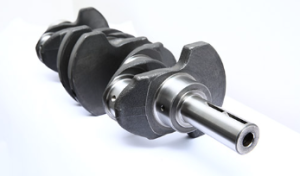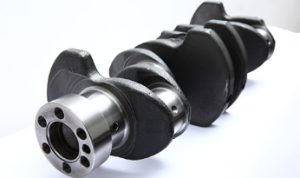Are you curious about the crankshaft position sensor location in your vehicle? You’re not alone. Many people wonder about this essential component and its role in the smooth operation of their gasoline engines. In this article, we will delve into the world of crankshaft position sensor locations, highlighting their functions, benefits, and use experiences. Furthermore, we will discuss the various classifications, materials, and machining processes for crankshafts designed specifically for gasoline automotive and motorcycle engines.
The crankshaft position sensor is a vital component in modern engines, responsible for monitoring the crankshaft’s position and rotational speed. This data is then sent to the engine control module (ECM), which adjusts the ignition timing and fuel delivery to optimize performance and fuel efficiency. Knowing the crankshaft position sensor location is crucial for diagnostics and maintenance purposes.

One of the key advantages of having a crankshaft position sensor is its ability to enhance engine performance. By providing the ECM with accurate information, the engine can operate at its peak efficiency, reducing emissions and improving fuel economy. Additionally, this sensor helps prevent engine misfires and other issues that could potentially cause costly damage.
Various users have reported positive experiences with crankshaft position sensors. Many have noticed increased fuel efficiency and smoother engine operation after replacing a faulty sensor. Proper maintenance of the crankshaft position sensor location can lead to a more enjoyable and worry-free driving experience.
Crankshafts designed for gasoline automotive and motorcycle engines can be classified according to their design and construction. The most common types include flat-plane and cross-plane crankshafts. Flat-plane crankshafts are typically found in high-performance engines, while cross-plane crankshafts are more commonly used in V8 engines for better balance and reduced vibrations.

When it comes to materials, crankshafts are generally made from cast iron, forged steel, or billet steel. Cast iron crankshafts are budget-friendly and suitable for low-performance engines. Forged steel crankshafts offer increased strength and durability, making them ideal for high-performance applications. Billet steel crankshafts are custom-made for specific applications, providing the highest level of strength and precision.
Crankshaft manufacturing processes include casting, forging, and machining. Casting is a cost-effective method, suitable for mass production. Forging offers improved strength and durability, while machining ensures precise dimensions and surface finishes.
In conclusion, understanding the crankshaft position sensor location and its role in your gasoline engine is crucial for optimal performance and maintenance. By exploring the various classifications, materials, and manufacturing processes of crankshafts, you can make informed decisions about your engine’s components and ensure a smooth, enjoyable driving experience.
